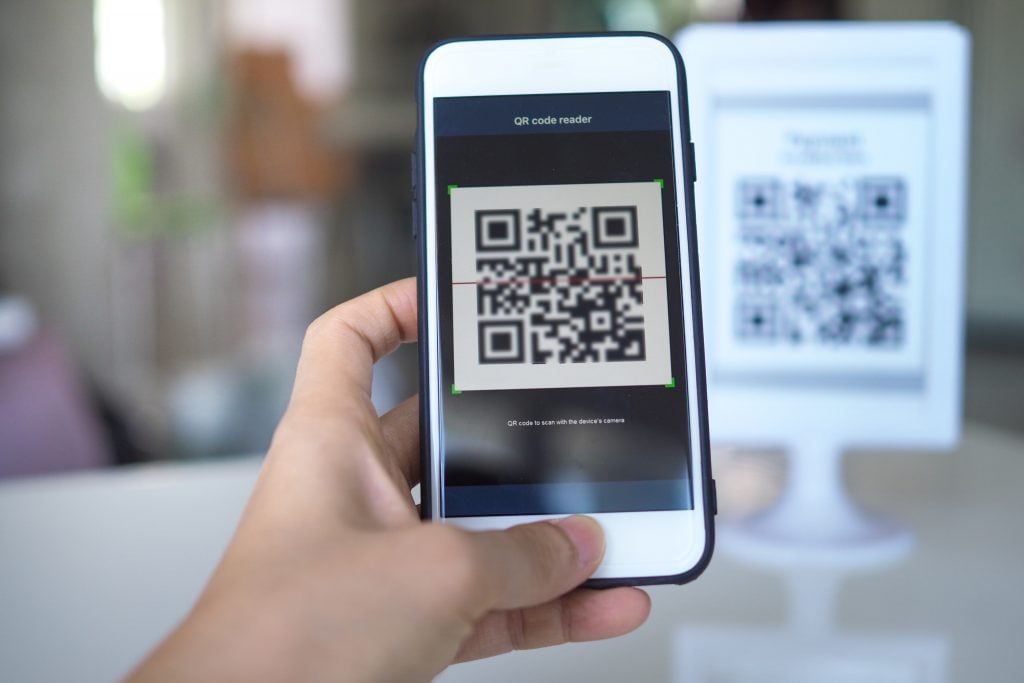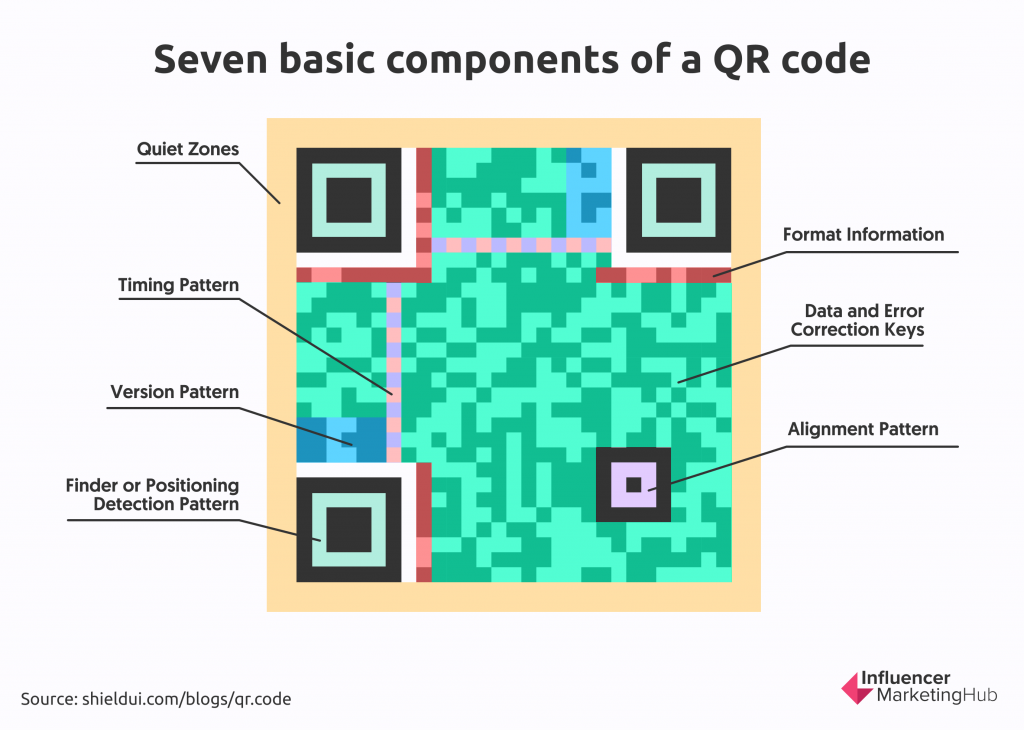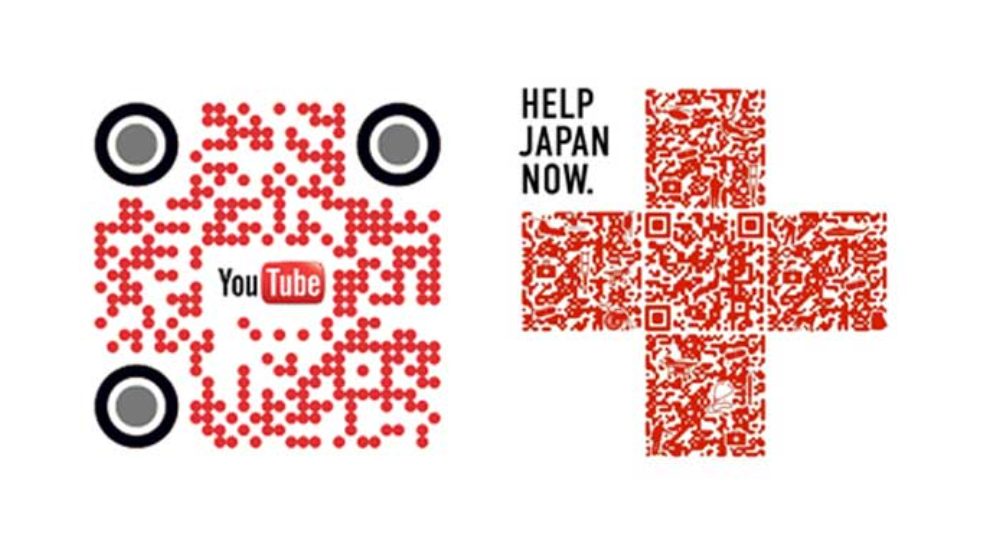A 2-dimensional image of a cluster of tiny squares arranged in a random pattern—this is probably the mental picture you form when you hear the term “QR code”. You can see QR codes both in physical and on virtual spaces, typically used by businesses like restaurants, hotels, and shopping malls. You probably have scanned a few with your mobile phone’s camera.
But what exactly are QR codes? In this article, we’ll do a deep dive into the basics of the QR code.
How Do QR Codes Work?:
What is a QR Code?

Short for Quick Response Code, a QR code is a type of matrix barcode that looks like a jumble of tiny dots and squares within a square grid. When you use a phone or a scanning device to read a QR code, you can instantly access the encoded information, which is why it is termed “quick response.” QR codes may look simple and unassuming, but they can store a wide range of information.
The QR Code was developed by Masahiro Hara and released in 1994 by DENSO Wave, a Toyota subsidiary, to ease the burden of processes in the manufacturing of automotive parts. While barcodes were widely used in Japan, they had limitations. Specifically, barcodes can only hold about 20 alphanumeric characters. Plus, the device used must scan the code from the correct angle to be able to read the information.
Meanwhile, QR codes are capable of storing thousands of alphanumeric characters, including Kanji characters. QR codes are also readable both horizontally and vertically.
QR codes were meant for the manufacturing industry at first. But with the rise of mobile devices, QR codes have steadily risen in popularity and have been used not only in industries such as retail, food and business, and entertainment but also by entrepreneurs and corporations to promote their business. In addition, developers of the QR code chose not to enforce patent rights, as they wanted the public to use the technology without worrying about legal or financial implications.
How Does a QR Code Work?
To read a QR code, you have to use a scanner. A camera phone with QR-scanning technology will do. In some cases, you need to download a special app to scan a QR code. Pointing or hovering the lens of your scanning device over a QR code lets it read the data stored in the QR code.
Primary Types of QR Codes
There are 2 types of QR codes.
-
Static QR Code
In a static QR code, the information is hard-coded. Meaning, once data is stored in the code, it can’t be edited, overwritten, updated, or deleted.
If you’re a merchant, advertiser, or business owner, you can use static QR codes for one-time PR or marketing events. You can store permanent information such as employee numbers, product descriptions, text messages, promo codes, payment URLs, and Wi-Fi passwords in a static QR code. Every time a customer scans a static QR code, they always see the same information.
-
Dynamic QR Code
A dynamic QR code stores editable and trackable information. Once you launch a dynamic QR code, you can easily update or change the information it holds any time you want without having to reprint the code.
You can use a dynamic QR code to display your Facebook page this week, then link it to your Instagram profile next week. Another way you can use dynamic QR codes is for marketing seasonal promotional programs. For example, you can use a single QR code to link to your discount coupon pages for a Black Friday sale. When the offer ends, you can replace it with the link to your Christmas holidays sale page.
The QR Code’s Anatomy

A QR code appears to be a black-and-white checkerboard. But instead of having identically shaped squares arranged in a linear direction, the blocks in a QR code come in different sizes and are arranged in a random pattern. And instead of being random, this arrangement depends on the data in the code, together with the other components used in creating the QR code.
These are the seven basic components of a QR code:
-
Finder or Positioning Detection Pattern
These are 3 identical squares on the bottom left and top right and left corners of the QR code. They allow the decoder or scanner to detect the correct orientation of the code quickly and accurately.
-
Alignment Pattern
This pattern looks similar to the finder pattern, but it has a smaller black square at the center. It aids the scanner to determine the orientation of the QR code, especially if the image is distorted, on a curved space, or if the code is larger.
-
Timing Pattern
These alternating white and black modules typically form vertical and horizontal lines. They represent the size of the encoded data.
-
Version Pattern
The version patterns are found beside the positioning markings. They show what type of QR code is used in the coding process. There are 40 types of QR codes, but codes 1 to 7 are the ones that are commonly used.
-
Format Information
Located around the positioning patterns, the format information contains data such as the chosen data mask pattern and error tolerance of the code. This part of the code allows easier scanning.
-
Data and Error Correction Keys
This area contains all the encoded data. The error correction capability of the QR code allows data to be decoded even if the code is dirty or partially damaged.
-
Quiet Zones
This section is the white space that surrounds the code. It is vital in telling the decoder or scanning device what is and isn’t part of the QR code.
How Much Information Can a QR Code Store?
A single QR code can store up to 3 kilobytes of information. It can hold 7,089 digits or 4,296 alphanumeric characters, including Kanji and Kana characters, punctuation marks, and special characters.
While this doesn’t sound much, it’s enough to put your marketing efforts into overdrive. The primary purpose of a QR code is to make it easier for you to reach out to your target audience. A QR code doesn’t need to be loaded with too much information to achieve this.
If you are promoting your website, you only need to copy-paste the URL. If you want to share information about the products you are selling, you can just provide the link to the webpage. The same goes if you are offering discounts and promos–you only need to put the destination link.
Website URLs and landing pages rarely reach a hundred characters, so the 4,296-character limit is more than enough to accommodate the data you intend to store in the QR code.
Below are the types of information that you can store in a QR code.
- Plain text (announcements, greetings, invitations)
- Contact information (personal/business addresses, email addresses, telephone numbers, mobile phone numbers
- Link to social media profiles (Facebook, Instagram, LinkedIn, YouTube)
- Payment links (PayPal, Bitcoin)
- Calendar events
- Website URLs
- Link to apps
- Geolocation
How Do You Create a QR Code?
In just a few simple steps, you can generate a QR code using your desktop or mobile phone browser.
-
Go to a QR code generator website
If you Google-search “free QR code generator”, you will find several websites, like Beaconstac and QR Code Monkey, that can help you create a QR code. If you’re a Shopify merchant, you can generate QR codes for your brand via the Shopcode feature.
Free QR code generators are ideal for personal use or if you’re only starting a small business and you want to market your brand. Do keep in mind that free QR generator apps only create codes but don’t offer other services like tracking or data analytics.
But if you plan on rolling out wide-scale marketing campaigns and you want to monitor the effectiveness of your campaigns, you can use a paid platform.
-
Enter data and customize the QR code
After choosing a free QR generator app, you will be asked to encode the data you want to make a QR code for. You can enter the URL of your website, the webpage that displays the offer you want to promote, or the link to your social media profile.
QR generator apps provide the basic black-and-white QR code design, but most provide the option to customize the design of your QR code to match your brand. If you wish to make your QR code more attractive or have it match your brand colors. Some apps also let you add sound, animation, or a location map. Below is an example of a customized QR code.

Source: blog.beaconstac.com
-
Test the QR code
Once you’ve entered all the relevant information, the app automatically generates the QR code for that content. You can now test the QR code to check if it leads to the destination link you’ve entered or contains the information you want to display to people. Always remember that testing is an important step, especially if you’re using a static QR code because once you download the code, you won’t be able to make any changes to it.
-
Download the QR code
If the QR code works as intended, you can now download it as an image file. You can either share it online or add it to your marketing collateral, such as brochures, posters, catalogs, and outdoor signages.
What are the Benefits of Using QR Codes for Your Business?
QR codes allow you to engage with your customers in a whole new way. If you haven’t tapped QR codes yet for your business, here are reasons you should consider using them now.
QR codes are easy to use
Instead of typing your website’s URL or searching for the Facebook page or Instagram profile, the consumer can simply scan the QR code to be directed to your website or social media. This method eliminates typing errors, which may prevent your target audience from reaching your website or, worse, lead them to a different webpage.
QR codes let you save on costs
Instead of allocating a large portion of your marketing budget to print promotions like banners, billboards, brochures, and leaflets, you can use QR codes instead. QR codes tie your online media to print media, so it would be easier to share rich content without spending a lot on printing costs.
Let’s say you have an online shop, and you sell computer hardware. If you use a catalog to market your products, you have to put all the information, like the product description, technical specifications, and other relevant details of each product, on paper. Imagine how many pages that would take. But if you use a QR code, you can just put the URL of your online shop and your customers would be able to view the products you sell.
QR codes scans provide insight into your marketing strategy
The number of scans generated by your QR code gives you valuable information on how effective your marketing campaigns are. As mentioned above, paid platforms offer analytics services that track and measure data such as the number of scans you get at a particular time, what devices people use to scan your QR code, and from which areas around the world you get the scans.
With these statistics, you can tweak your marketing strategy and retarget leads. Do note that QR tracking only applies to dynamic QR codes.
QR codes allow contact-free payments
Payment transactions using QR codes are not only convenient for your customers but for you as well. Accepting payments online or through a physical store is a lot faster, not to mention more secure, than having customers pay using cash or credit card. This way, cashiers won’t have to key in the product prices manually, which reduces not only their burden but also minimizes encoding errors. Long lines could also be avoided as customers only need to scan the code to pay.


